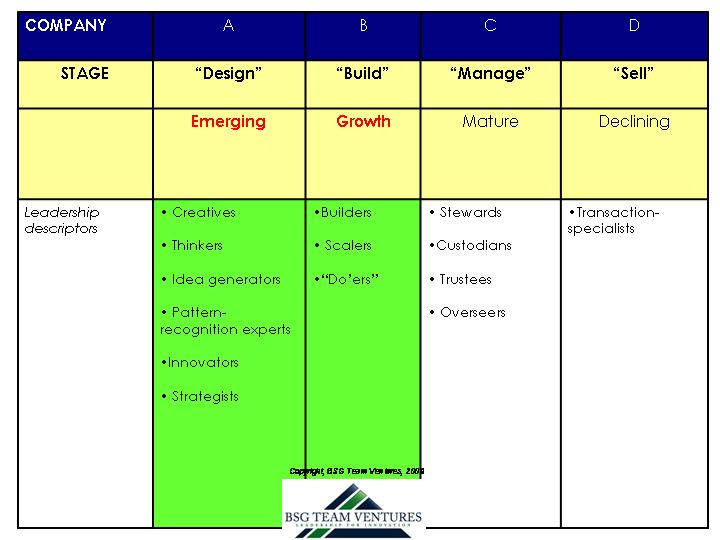
A few months back in the New Yorker Magazine (May, 2009), Malcolm Gladwell penned a really interesting article on the subject of how underdogs-when they change the rules of the game-can beat stronger, bigger rivals. This is a story told many times over, starting with the Biblical story of David beating Goliath, which Gladwell uses in his article as the first of two fulcrums to work the concept out. The other fulcrum he uses is a girls basketball team on the West Coast that had as its coach a successful entrepreneur, Vivek Ranadivé, accustomed to innovating the rulebook to a start-up's advantage as founder, Chairman and CEO of TIBCO Software, $1+B enterprise value publicly traded start-up success.
In the case of Gladwell's article, the girls basketball coach was not given any special "talent" as an asset to build around. In fact, kids' teams at younger ages are most often randomly assembled, with no "draft picking" involved. So, Randivé had to play with the hand he was dealt. He ended up with no tall girls, nor good shooters, just moldable clay, where a winning strategy would have to prevail over a special selection of talent.
In professional sports as well as business, however, coaches/CEOs get to pick their teams. And for business, there is no more crucial time to think about executive team-building than now. According to most analyst reports, markets are preparing for growth. The strongest competitors in each industry were the first to streamline operations at the beginning of the downturn and make sure their financial houses were in order. Now these leaner and meaner companies are looking to leapfrog their competition as recovery sets in. If a rising tide floats all boats, the top companies in each industry sector are looking for a way to rise at a faster rate than their weaker rivals. A recent McKinsey report framed this competitive dynamic, saying:
Roughly one in three industry leaders was toppled during the previous recession as attackers used the downturn to their advantage. Recent big acquisitions in sectors such as pharmaceuticals and information technology suggest that the current slump will be no different.
Our researchshows that while all companies in an industry typically suffer during a recession, the performance gap between strong and weak rivals tends to widen. This gives strong players more opportunities to reshape their competitive environment.
But, how should these companies go about accelerating around the executive curve into the straight-away of economic expansion?
Sticking with basketball as a parallel for what one business can do to accelerate their rise over their peers, is it possible to consider hiring a superstar in a key area of the business? A Michael Jordan of the Bulls, or Kevin Garnett of the Boston Celtics, or L.A. Lakers' Kobe Bryant? However, what should the latest definition of "superstar" be in light of all the change the recession has wrought in the business landscape? McKinsey's article went on to chronicle 10 key changes in the global competitive topography that are "must-be- aware-of's" when re-engaging in strategic planning for the recovery in 2009 and beyond. In July's issue of Harvard Business Review, one answer is to bring on an executive with what Ron Heifetz and Marty Linsky call "adaptive leadership" ability-
The current economic crisis is not just another rough spell. Today's mix of urgency, high stakes, and uncertainty will continue even after the recession ends....
Instead of hunkering down and relying on their familiar expertise to deal with the sustained crisis, people in positions of authority-whether they are CEOs or managers heading up a company initiative-must practice what the authors call adaptive leadership. They must, of course, tackle the underlying causes of the crisis, but they must also simultaneously make the changes that will allow their organizations to thrive in turbulent environments.
Adaptive leadership is an improvisational and experimental art, requiring some new practices.
The adaptive leader has a greater agility than other leadership types. The adaptive-leader type also allows for optimal breakthrough performance coming out of a down cycle. Generic adaptive leadership is not enough, however. You still need to figure out where you topgrade your executive team to best capitalize on the upside afforded in an executive change. Do you seek this new "adaptive leader" for marketing, strategy, operations, sales? General management of one business unit that's high growth versus another that's slower growth but lower risk? Or is it in new product development, R&D, or international/global specialization? At the risk of overplaying a metaphor, coming back to basketball for a moment, it's interesting to note that each successful professional team has often been built around one "superstar" player, but not always playing the same position. There are 3 traditional positions in basketball-guard (2), forwards (2), and a center. Magic Johnson was a guard (point guard to be specific) and he took the Lakers to several championships. A current L.A. Lakers superstar, Koby Bryant, as well as the Boston Celtics Paul Pierce are also guards. However, Larry Bird and Julius "Dr. J" Irving were forwards. And not to leave out the third successful superstar permutation, Shaquille O'Neal, Wilt Chamberlain, Kareem Abdul-Jabbar, and Patrick Ewing were all "superstar" centers who repeatedly drove their teams to pennant victories.
Once you identify where the biggest impact can be made via topgrading your current executive team, and you pre-select for a leader with proven adaptive leadership skills and experience, the final question presents itself-where are adaptive leaders most frequently bred? Where should you look for them, what ecosystem have they been building there leadership toolbox within?
Our experience indicates that a disproportionate number of adaptive leaders come from professional backgrounds they've honed in two specific stages of the company lifecycle-

At our firm, where we specialize in recruiting adaptive leaders, we’ve broadly referred to the executives who are best equipped at leading the green-highlighted columns above of emerging and growth-stage as “Builder-Leaders.” However, whether we refer to them as “builder-leaders” or “adaptive leaders,” their experiences creating and growing companies in these stages are the foundational criteria for success for those companies looking to outpace their competitors as we come out of a down cycle and head into the next growth phase.
The winning formula for extra-ordinary company performance in this next economic expansion is a combination of good internal executive assessment as to which role(s) will give you the biggest step-function impact if you topgrade them, and a key attribute of “adaptive leadership” in the new executive you bring. This is the very same leadership characteristic Malcolm Gladwell’s Vivek Ranadivé demonstrated when he was coaching his daughter’s basketball team to compete and win against the rest of their basketball league.





